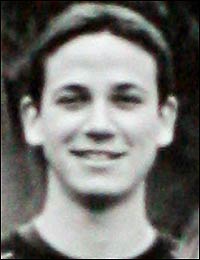Sven Jaschan gets suspended sentence

- BBC News page on Sven Jaschan verdict
- Real threat is organised gangs of criminals not ‘stupid teenagers’ according to Sophos chief
- Was Sven Jaschan a ‘script kiddie’?
Marc Rogers specialises in the psychology of computer crime. His ‘new hacker taxonomy’ identifies typical hacker roles – Rogers’ descriptions are based on behaviour as opposed to motivation. A quick summary of the roles follows (direct quotes apart from ‘coders’...
| newbie/tool kit (NT) | have limited computer and programming skills. These persons are new to hacking and rely on already written pieces of software, referred to as tool kits, to conduct their attacks. The tool kits are readily available on the Internet. |
| cyber-punks (CP) | usually have better computer skills and some programming capabilities. They are capable of writing some of their own software albeit limited and have a better understanding of the systems they are attacking. They also intentionally engage in malicious acts, such as defacing web pages, and sending junk mail (known as spamming). Many are engaged in credit card number theft and telecommunications fraud. |
| internals (IT) | The IT can be made up of disgruntled employees or ex-employees who are usually quite computer literate and may be involved in technology related jobs. They are able to carry out their attacks due to the privileges they have been or had been assigned as part of their job function. This group accounts for nearly 70% of all computer related criminal activity. |
| coders (CD) | have programming skills. May provide and distribute tools used by Newbies and others |
| old guard hackers (OG) | no criminal intent although there is an alarming disrespect for personal property. The OG embraces the ideology of the first generation hackers and appears to be interested in the intellectual endeavor. |
| professional criminals (PC) | The PC and CT groups are probably the most dangerous. They are professional criminals and ex-intelligence operatives who are guns for hire. They specialize in corporate espionage, are usually extremely well trained, and have access to state of the art equipment. It has been theorized that the professional category has expanded since the dissolution of several of the eastern block intelligence agencies. |
| cyber-terrorists (CT) | |
| Source: Marc Rogers, A New Hacker Taxonomy, University of Manitoba, 2000 | |
Sven Jaschan wrote code that exploited a buffer overflow vulnerability in Windows 2000 and XP based operating systems – and the worm can spread by finding open ports in other computers running Windows XP/2000. There is a suggestion that the vulnerability was discovered by ‘reverse engineering’ a patch released by Microsoft that blocks the vulnerability – Sasser appeared some days after the release of the patch and affected unpatched systems. Whoever did the reverse engineering certainly knew quite a lot about operating systems and port code. The Sasser and Netsky virusses themselves contained badly code that caused the program to crash.